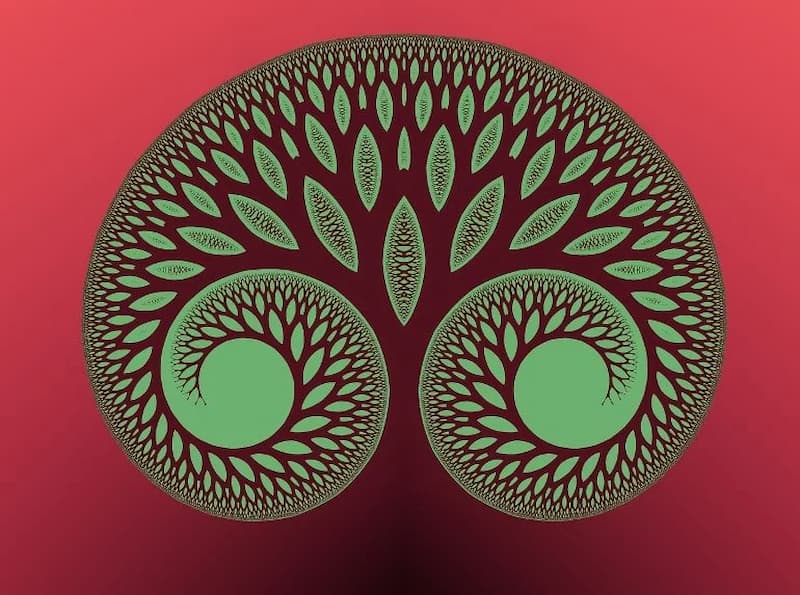(Neuroscience News) One in five U.S. adults will experience a mental illness in their lifetime, according to the National Alliance of Mental Health. But standard treatments can be slow to work and cause side effects.
Related Worsening Mouse Plague Ravages Rural Australia
by Staff Writer, November 19th, 2021
To find better solutions, a Virginia Tech researcher has joined a renaissance of research on a long-banned class of drugs that could combat several forms of mental illness and, in mice, have achieved long-lasting results from just one dose.
Using a process his lab developed in 2015, Chang Lu, the Fred W. Bull Professor of Chemical Engineering in the College of Engineering, is helping his Virginia Commonwealth University collaborators study the epigenomic effects of psychedelics.
Their findings give insight into how psychedelic substances like psilocybin, mescaline, LSD, and similar drugs may relieve symptoms of addiction, anxiety, depression, and post-traumatic stress disorder. The drugs appear to work faster and last longer than current medications—all with fewer side effects.
The project hinged on Lu’s genomic analysis. His process allows researchers to use very small samples of tissue, down to hundreds to thousands of cells, and draw meaningful conclusions from them. Older processes require much larger sample sizes, so Lu’s approach enables the studies using just a small quantity of material from a specific region of a mouse brain.
And looking at the effects of psychedelics on brain tissues is especially important.
Researchers can do human clinical trials with the substances, taking blood and urine samples and observing behaviors, Lu said. “But the thing is, the behavioral data will tell you the result, but it doesn’t tell you why it works in a certain way,” he said.
But looking at molecular changes in animal models, such as the brains of mice, allows scientists to peer into what Lu calls the black box of neuroscience to understand the biological processes at work. While the brains of mice are very different from human brains, Lu said there are enough similarities to make valid comparisons between the two.
VCU pharmacologist Javier González-Maeso has made a career of studying psychedelics, which had been banned after recreational use of the drugs was popularized in the 1960s. But in recent years, regulators have begun allowing research on the drugs to proceed.
In work by other researchers, primarily on psilocybin, a substance found in more than 200 species of fungi, González-Maeso said psychedelics have shown promise in alleviating major depression and anxiety disorders. “They induce profound effects in perception,” he said. “But I was interested in how these drugs actually induce behavioral effects in mice.”
To explore the genomic basis of those effects, he teamed up with Lu.
In the joint Virginia Tech—VCU study, González-Maeso’s team used 2,5-dimethoxy-4-iodoamphetamine, or DOI, a drug similar to LSD, administering it to mice that had been trained to fear certain triggers. Lu’s lab then analyzed brain samples for changes in the epigenome and the gene expression. They discovered that the epigenomic variations were generally more long-lasting than the changes in gene expression, thus more likely to link with the long-term effects of a psychedelic.
After one dose of DOI, the mice that had reacted to fear triggers no longer responded to them with anxious behaviors. Their brains also showed effects, even after the substance was no longer detectable in the tissues, Lu said. The findings were published in the October issue of Cell Reports.
It’s a hopeful development for those who suffer from mental illness and the people who love them. In fact, it wasn’t just the science that drew Lu to the project.
For him, it’s also personal.
“My older brother has had schizophrenia for the last 30 years, basically. So I’ve always been intrigued by mental health,” Lu said. “And then once I found that our approach can be applied to look at processes like that—that’s why I decided to do research in the field of brain neuroscience.”
González-Maeso said research on psychedelics is still in its early stages, and there’s much work to be done before treatments derived from them could be widely available.
Stillness in the Storm Editor: Why did we post this?
The news is important to all people because it is where we come to know new things about the world, which leads to the development of more life goals that lead to life wisdom. The news also serves as a social connection tool, as we tend to relate to those who know about and believe the things we do. With the power of an open truth-seeking mind in hand, the individual can grow wise and the collective can prosper.
– Justin
Not sure how to make sense of this? Want to learn how to discern like a pro? Read this essential guide to discernment, analysis of claims, and understanding the truth in a world of deception: 4 Key Steps of Discernment – Advanced Truth-Seeking Tools.
Stillness in the Storm Editor’s note: Did you find a spelling error or grammatical mistake? Send an email to [email protected], with the error and suggested correction, along with the headline and url. Do you think this article needs an update? Or do you just have some feedback? Send us an email at [email protected]. Thank you for reading.
Source:
https://neurosciencenews.com/psychedelics-doi-lsd-anxiety-19682/
Support our work! (Avoid Big Tech PayPal and Patreon)DIRECT DONATION


I theorize a disconnect from reality while still conscious allows for re-writing of memory. Its almost as if all memories can be brought out into temporal land and resubmitted to long term, as they always are, but the neural pathways are awaiting new link protocols. Like a whole new memory (rections are based in experience which is built from remembering who you are, in layman’s terms.) Recalling traumatic times repeatedly has a “death by 1,000 cuts” effect because the moment it re-enters long term you are not in the situation. This slowly diminises the anxiety every time the event is recalled. If psylocibin alone fixes it, the event wouldn’t have to happen under the influence. The event happens while under the influences of psychadelics. It’s a crutch. When it comes to clinical trials, participants should be split and a portion should sit on a couch, and a portion shouldn’t. However the portion that doesnt may be found discussing their traumas without the couch. Which again just points out the true efficacy of these medicines. (if that thing is a vaccine, shrooms are meds, period)
MDMx should be a primary med in the study as well. Maybe thee primary honestly. If it isn’t included, get it in there. People need to address stress. “Stuff it down with brown” just fills the container until it overfloweth.